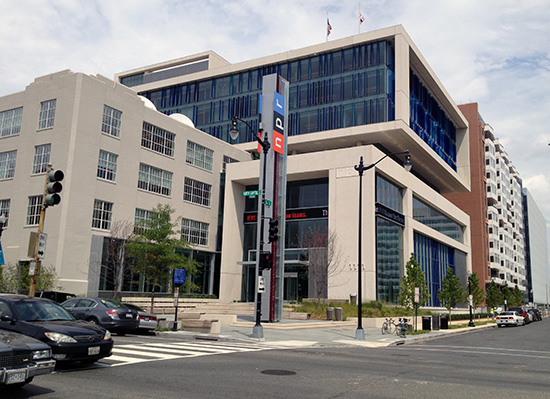As the story in Egypt continues to unfold, mature questions need to be asked about the role of Twitter in news reporting.

Last week, NPR Senior Strategist Andy Carvin's tweet - one of more than 170,000 - caught my attention:
Andy Carvin @acarvin16:
Various rumors that people trapped in Fatah mosque writing their names down in case they are killed. Can anyone confirm? #ramsis #Egypt
So, I asked a question:
Professor Jeremy @JeremyHL:
@acarvin - How in the world would you confirm a rumor on Twitter? #Egypt
Carvin has outlined his methods in the book Distant Witness for cultivating sources on the ground - he relies upon more than 97,000 followers to publicly sort information for him.
Andy Carvin @acarvin:
@JeremyHL I've been cultivating Twitter sources in Cairo for years now. Just b/c it's Twitter doesn't mean you can't do your job here.
Creighton University Professor Carol Zuegner jumped into the Twitter conversation at this point:
Carol Zuegner @czuegner:
@JeremyHL You should check out @acarvin's "Distant Witness."
Andy Carvin @acarvin:
@czuegner Thanks. One of the points of the book was to teach j-school students how to do this. @JeremyHL
Andy Carvin @acarvin:
@JeremyHL Oh, and it worked. The answer is yes.
Carol Zuegner @czuegner:
I love Twitter. Media hero @acarvin responded to a tweet. Day made.
Professor Jeremy @JeremyHL:
.@acarvin - I see that... if you actually know & #trust their reports. #Journalism
Professor Jeremy @JeremyHL:
@acarvin @czuegner - learning as we go, and increasingly interested in online #trust - #ThankYou
Carol Zuegner @czuegner:
@JeremyHL What we can trust online is an important topic.
Professor Jeremy @JeremyHL:
@czuegner - As I read about #trust more people mention it than define & operationalize it.
I am not the first to question Carvin's live tweets of revolutions in the Middle East. He told The Guardian in 2011 that his work is "a form of situational awareness."
During the Libyan uprising, Carvin tweeted 1,200 times over a two-day period. He told The Guardian that by using known sources or observing online behavior, he filters those messages that may be credible. His followers help verify information. Carvin calls this "open source journalism," even though his "Real-time Informational DJ & occasional journalist" approach includes private communication. His work is grounded in activism and technology, rather than extensive, formal journalism training.
The Distant Witness book frames social media as revolutionary in loosening control of news during the Arab Spring.
"I'm a storyteller who works at a news organization who commits acts of journalism," Carvin told On the Media and Brooke Gladstone early this year.
Gladstone's questions about real-time storytelling illuminate the gulf between traditional journalism methods and Carvin's model.
"Instead, if I just share more openly what I know and what I don't know, someone out there will probably come out and have an answer," Carvin said. While he admits sometimes misinterpreting Middle East culture and being "mortified" by errors, he shares graphic content.
"I made a decision early on that I wasn't going to censor myself simply because it was graphic, and I had a lot of people complain about that," Carvin said. "My Twitter followers and I, just by talking to each other" figure things out.
To my main concern about trust of sources, Carvin responds: "Well, it certainly helps if you know someone on the ground to start with..." He is not concerned about balance of viewpoints, instead presenting information from those online with him. "I'm trying to capture their stories," he said.
The live tweeting method is to ask sources for assertions and confirmation. This can be in opposition to cultural norms, as it was in Yemen. "I had to back off a little," he said. Still, while Carvin will talk to sources in private messages, including on Skype, he tells them some conversations must be public.
Media critic Michael Wolff challenged Carvin's "overreach" during live tweeting of the Newtown shooting. The crowd-sourcing on Twitter generated false reports about a purple van, a second shooter and fake letter. "While the guise is to re-tweet in order to verify," Wolff wrote, "the effect is to propagate."
Carvin directly responded to Wolff's column by rejecting the label of "social media promoter" on Twitter:
I'm not sure what you mean by a social media promoter. I use social media a lot, because my day job is to experiment with new tools to see if they can improve the quality and diversity of our reporting. If anything, I'm a promoter of NPR and the importance of public media in our society. Social media is just an aspect of it.
Carvin insists one of his jobs is to monitor mainstream media reports and ask questions. He asks "people to figure" out whether or not reports are true or false. Carvin's methods remain in stark contrast to those of traditional NPR journalists. During an Aug. 9 tour of NPR's new Washington, D.C. headquarters, reporter Craig Windham told our small group that NPR prefers to be right rather than first with a story.
While crowd-sourcing may unearth facts during a breaking news story, I think Carvin's methods are particularly shaky when applied to reporting within other cultural contexts.
At the recent Association for Education in Journalism and Mass Communication (AEJMC) conference, a panel of law and ethics experts debated freedom of expression beyond the U.S. borders.
Sarar Mohamed Khamis, University of Maryland professor and Arab media expert, says a YouTube video may be viewed as blasphemy in the Middle East, which produces violent reactions in the Muslim world. "There is a very, very high level of respect to all religious symbols and all the messages of God," she said. "This is a very, very sensitive topic for any Muslim - we are always really required to... show the utmost respect possible to all religious figures, symbols, profhets and messengers... and not to treat them in any way that could be not only could be defamatory or negative, but even treats them as just ordinary human beings is considered offensive let alone portraying them in negative cartoons, or some kind of video, or some kind of media representation that is hurtful."
"This is really intolerable to Muslims worldwide," she added because of cultural and religious contexts and lack of understanding.
U.S. Department of State representatives urged encouragement of engagement, discussion and understanding, though, as core values rather than restriction of free speech. Article 19 of the Universal Declaration of Human Rights highlights free expression as a basic human right.
"Everyone has the right to freedom of opinion and expression; this right includes freedom to hold opinions without interference and to seek, receive and impart information and ideas through any media and regardless of frontiers."
"Freedom of expression is a fundamental human right," University of Minnesota Professor Jane Kirtley said. "It's not uniquely American - we like to think that we've been moving toward perfecting it, but this is not an example of America trying to impose its values."
"We're talking about apples and oranges, coming from different perspectives," Khamis said. "Different cultural, religious [and] social backgrounds, political contexts, then what constitutes freedom of expression?"
In this view, the "borderless Internet" across languages, cultures and religions is seen as a problem because of anonymity, hate speech, attacks and lack of representation of religious leaders. "If it is not really somehow 'regulated' ...somehow put in the right perspective, it can go out of hand," Khamis said.
Carvin, however, echoes the decidedly Western view on free speech. "Social media has the word 'social' in front of it for a reason because you have human beings interacting with each other... everything from talking about the news to sharing their latest cat videos, and I think all of it is valid and all of it is important."
The contrast between Carvin's use of social network "bonds" with followers, and the traditional media audience perspective presents a challenge going forward. Carvin "realized early on the worst thing I could do on Twitter is act like a broadcaster journalist," and instead "acts like a person." This is his personal brand.
The organizational brand of NPR and other traditional journalists instead continues to exercise caution in reporting - especially during developing stories abroad. NPR's management, however, expresses the view that Carvin's personal brand, as well as his fundraising, can "co-exist" with the larger NPR brand to the benefit of both.
We are either witnessing the morphing of journalism into a collection of personal brands and follower interactions or a conflict in values that will further weaken a struggling industry. Instead of reflexively celebrating Andy Carvin's new rules, it is time to engage in serious discussion about online tools.
On the one hand, promoting transparent journalistic methods is a healthy outcome from Carvin's experiments on Twitter. On the other hand, trusting anonymous sources to publicly judge information in real-time does not always seem responsible within the context of a dangerous and unstable world. Andy Carvin has a First Amendment right to live tweet, and we have the freedom to question his methods.
